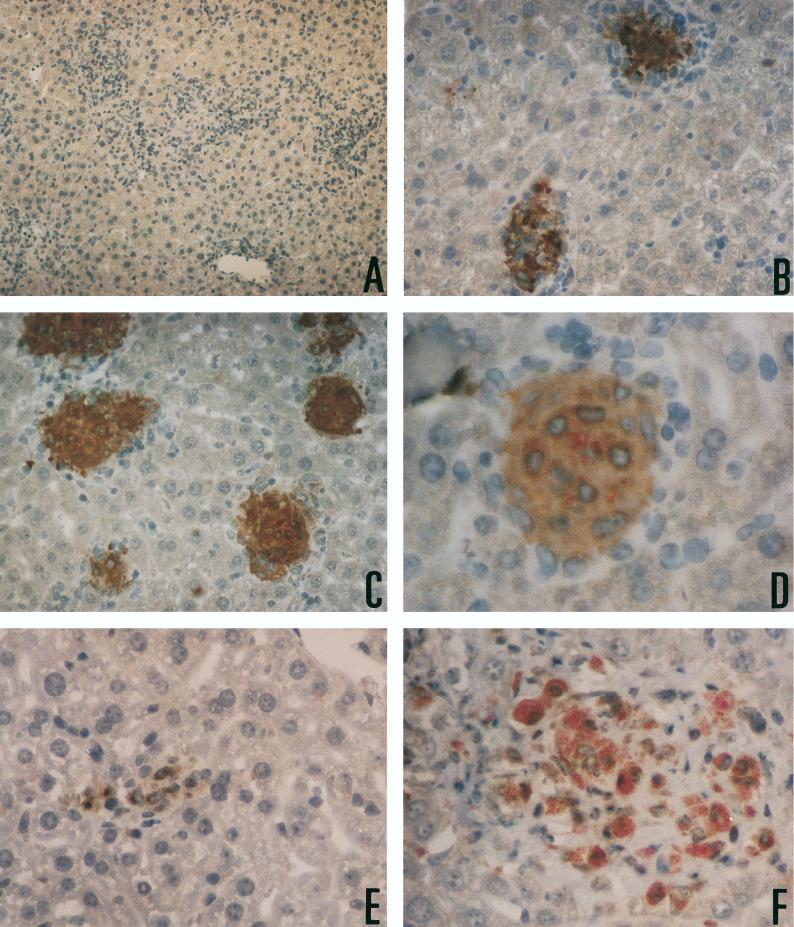FIG. 4.
Immunohistological evidence of macrophage activation in hepatic granulomas. (A) Liver sections were stained simultaneously with a polyclonal antibody for the expression of iNOS, with reactivity revealed through a peroxidase-conjugated secondary antibody, and for the presence of acid-fast bacilli. Sections from mice with the iNOS gene disrupted that were infected for 2 months with M. avium 25291 were used as a negative control for specificity (magnification, ×600) (B and C) Extensively labeled granulomas were observed in BALB/c mice infected for 1 month with strain 2447 (B) (magnification, ×1,200) or strain 25291 (C) (magnification, ×1,200). (D) Note the presence of acid-fast bacilli in the granuloma induced by strain 25291 (magnification, ×2,400) despite the marked reaction for iNOS. (E and F) IFN-γ gene-deficient mice on a BALB/c background infected with strain 2447 (E) (magnification, ×1,700) or strain 25291 (F) (magnification, ×1,700) showed reduced granuloma formation as well as reduced reactivity for iNOS. Note the extensive proliferation of strain 25291 inside macrophages of IFN-γ−/− mice in panel F.

